When considering the cost of repainting a car, it’s essential to understand the various factors that influence pricing. One common way to estimate the cost is by calculating the price per square foot. Repainting an entire vehicle will generally be more expensive than focusing on specific parts like the car’s hood or car hoods.
If you’re only interested in repainting the car’s hood, this can be a more budget-friendly option. However, the price can still vary depending on factors such as the condition of the previous paint and whether any wet sanding is needed to prepare the surface. Wet sanding helps to smooth out imperfections and is often necessary for achieving a high-quality finish.
The overall cost also depends on whether you are dealing with just the car hood or planning to repaint the entire car. Repainting an entire car includes additional preparation work and more paint, which can increase the cost per square foot.
Furthermore, if the car’s metal has existing damage or rust, this will need to be addressed before painting, potentially adding to the overall cost. Custom work, such as repainting the car’s hood to match or contrast with the rest of the vehicle, can also impact the final price.
In summary, when asking, “How much to paint a hood of a car cost?” consider whether you’re painting the entire vehicle or just parts like the car hood. Factors such as the condition of the paint, the need for wet sanding, and the amount of work required will all influence the cost per square foot.
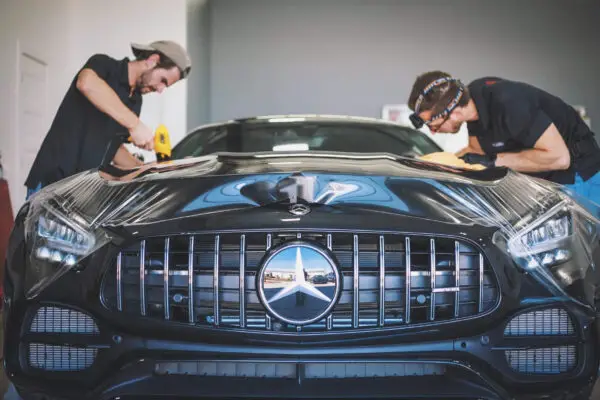
What factors influence the cost of painting a car hood?
The cost to paint a car hood can vary widely depending on several factors, including the quality of the paint job and the type of paint used. Here’s a detailed breakdown of what influences the price:
Paint quality and type
The type of paint you choose plays a significant role in the cost. Single-stage enamel paint is usually the lowest-level paint job and is less expensive but lacks the depth and durability of other options. Urethane paint offers better longevity and a more vibrant finish, often used in mid-range jobs. Metallic paint and high-end jobs can be more costly due to the additional materials and expertise required to apply these finishes. Showroom quality jobs and professional jobs use top-tier materials and techniques, making them the most expensive.
Prep work
The painting process involves substantial prep work to ensure a smooth, lasting finish. This includes sanding the car hood, applying body filler if there are imperfections, and priming the surface.
Professional expertise
Hiring a professional automotive painter or a reputable body shop can significantly impact the price. A professional painter will ensure the use of proper techniques and equipment, such as a paint sprayer, and can provide a more durable and aesthetically pleasing finish compared to a DIY approach. The cost may also reflect their level of skill and the complexity of the paint car hood job.
Paint jobs categories
The cost varies depending on the category of the paint job:
- Low-end jobs: typically use basic materials and techniques, often with spray paint and minimal prep work.
- Mid-range jobs: involve better quality materials and more meticulous preparation.
- High-end jobs: include premium paint materials, extensive prep work, and often a clear coat for added protection and shine.
Additional factors
The cost to paint a car hood is also influenced by the foot area being covered and whether it’s your own car hood or if additional parts of the car are being painted. Whether the existing paint needs to be stripped, and the use of drop cloths to protect surrounding areas can also affect the total cost.
Overall, the process is a detailed and involved task level of preparation work, and the expertise of the professional automotive painter all play crucial roles in determining the final cost of painting a car hood.
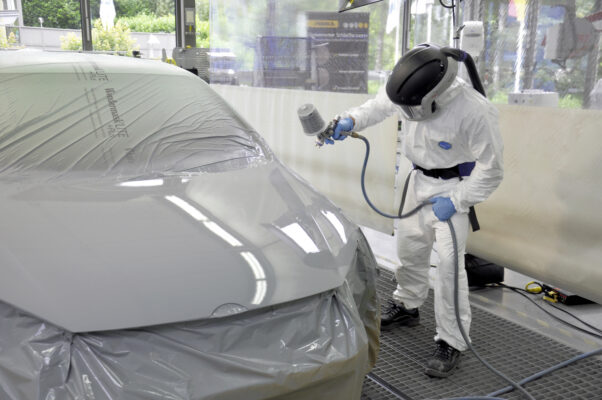
What is the typical cost range for a DIY hood paint job?
When considering a DIY paint job for your car hood, the cost can vary depending on several factors. Here’s a detailed look at the typical cost range for such a project:
Paint quality and type
The type of paint you choose significantly impacts the overall cost. For a low-end paint job, you might use single-stage enamel paint or spray paint, which is more affordable but offers less durability and finish quality.
Urethane paint might be used for a mid-range paint job, providing better results at a higher cost. If you’re aiming for a high-end paint job with showroom quality, expect to pay more, even for a DIY project, due to the higher cost of materials and the need for multiple layers, including a clear coat.
Preparation work
Proper preparation work is crucial for a successful paint job. This includes sanding the car hood, applying body filler to repair any imperfections, and possibly removing the previous paint. The extent of preparation work needed will impact the cost. Skipping thorough prep can lead to poor results, so investing time and materials here is important.
Materials and equipment
The cost of materials and tools also affects the overall expense. Basic supplies like paint sprayers, and drop cloths will be necessary. For a DIY hood paint job, you might opt for a budget-friendly paint sprayer and basic tools, which can save money compared to a professional setup.
Area and coverage
The cost to paint a car hood is influenced by the square foot area being covered. Even though a car hood is relatively small, the amount of paint required and the number of coats applied will impact costs. For example, applying fresh paint over a large or complicated surface may require more paint and effort.
In summary, for a DIY paint job, you can expect to spend:
- Low-end paint job: Around $50 to $150, using basic spray paint and minimal prep work.
- Mid-range paint job: Approximately $150 to $400, including better quality paint like urethane paint and more detailed prep.
- High-end paint job: Generally $400 to $800 or more, involving premium materials and extensive prep work.

What type of paint is best for a car hood?
When selecting the best type of paint for a car hood, there are several factors to consider, including the quality of the professional paint job, the desired finish, and the budget. Here’s a detailed guide on the best paint options:
Paint types
- Single-stage paint: this type of painting includes both the color and the gloss in one layer. It is commonly used in low-end jobs and provides a straightforward finish. While cost-effective, it lacks the depth and durability of more advanced systems.
- Two-tone paint: for a more customized look, two-tone paint can be applied. This technique involves painting the car hood in two distinct colours, which can add a unique aesthetic but may increase the overall cost and complexity of the paint job.
- High-end paint job: professional automotive paint, including metallic paint, is used in high-end jobs. This type of paint offers superior durability, and a high-quality finish, and can achieve a showroom-quality paint job. It is typically applied with a clear coat to enhance depth and protect the finish.
Preparation and application
- Preparation work: regardless of the paint type, thorough work and prep are crucial. This includes sanding the car hood, applying body filler if needed, and ensuring the surface is clean and smooth. Proper preparation work will ensure better adhesion and a more professional-looking result.
- Paint sprayer: for applying the paint, using a paint sprayer can achieve a smoother and more even coat compared to traditional methods. This is important for a clean finish, especially in mid-range jobs.

Cost and coverage
The cost of painting a hood can vary based on the paint type and the size of the area being painted. Typically, costs are calculated per square foot. For a low-end paint job, the cost might be lower, but for a high-end paint job with requested custom details, the price can be significantly higher.
Fresh paint and exact colour match are essential if you want to maintain a consistent look with the rest of your vehicle or if you’re matching a specific colour. In some cases, professional services might be needed to ensure a precise match.
Customization and detail
To request custom details such as two-tone paint or specific finishes can also influence the type of paint car hood used and the overall cost. Professional body shops or automotive painters can provide more options for customization and ensure that the paint job matches your expectations.
In summary, the best paint for your car hood depends on your budget, your desired finish, and the level of customization you seek. Paint is suitable for a basic finish, while metallic and urethane paints offer higher quality and durability. For a showroom quality paint job or a specific for request custom details, investing in professional paint and hiring a skilled professional painter will yield the best results.

How long does it typically take to paint a car hood?
The time it takes to paint a car hood can vary widely based on several factors, including the type of paint job, the level of detail required, and the condition of the hood. Here’s a breakdown of typical timeframes for different scenarios:
Basic jobs
For a high-level paint job, such as using single-stage paint the process can be relatively quick. If you’re doing it yourself, it might take around 4 to 6 hours including preparation work and application. This includes basic sanding, applying a single coat of paint, and possibly a clear coat if desired.
Mid-range jobs
A mid-range paint job involves higher-quality materials and more thorough preparation work. The process might take 1 to 2 days. This includes time for proper sanding, filler application if needed, applying multiple coats of paint, and a clear coat. Additional time may be needed for wet sanding between coats to achieve a smooth finish.
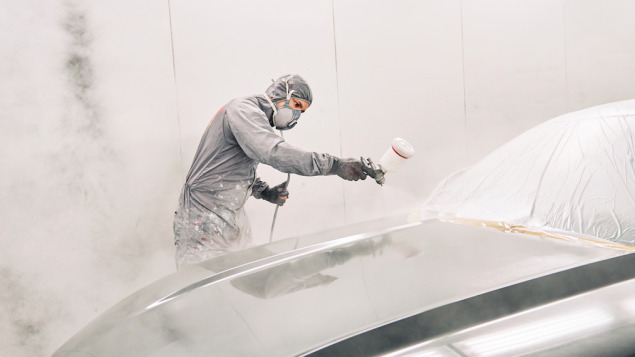
High-end and custom jobs
Professional jobs with custom details, such as metallic paint, require more time due to the complexity and the level of finish required. A high-end job could take 2 to 5 days. This timeframe accounts for detailed repair work, multiple layers of professional paint, careful application of the clear coat, and potentially several rounds of wet sanding to achieve a flawless finish.
Professional paint job vs. DIY
If you opt for a professional paint job at a shop, the process is typically more efficient due to the expertise and equipment available. Professional shops often have dedicated facilities and staff, allowing them to handle the job more quickly compared to a DIY project.
For a DIY car hood paint job, the time may vary based on your skill level and the resources available. The square foot area of the hood itself isn’t large, but preparation and drying times can add to the overall duration.
Additional factors
Custom details and specific requests, such as both the color or intricate designs, can extend the timeframe. Similarly, the need for repair work and achieving an exact color match can also affect how long the process takes.
In summary, painting a car hood can range from a few hours for a simple lowest-level paint job to several days for a detailed, high-end job with custom features.
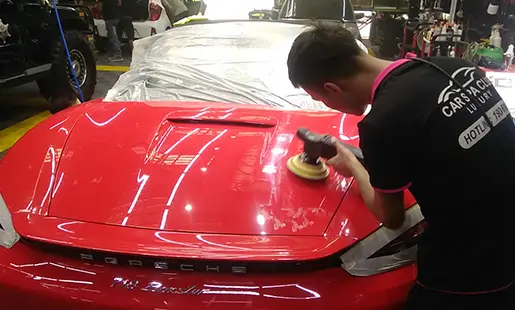
How do I find a reputable auto body shop?
To find a reputable auto shop for your car hood paint job:
Check reviews
Look for shops with positive online reviews and ask for personal recommendations.
Verify experience
Ensure they have experience with car hood paint jobs and professional automotive paint.
Compare quotes
Get estimates from multiple shops and understand their pricing, whether per square foot or a flat rate.
Inspect previous work
Request to see examples of their past work, especiallycustom detailsand paint jobs.
Evaluate service
Choose a shop with clear communication and good customer service, and check if they offer a warranty on their work.
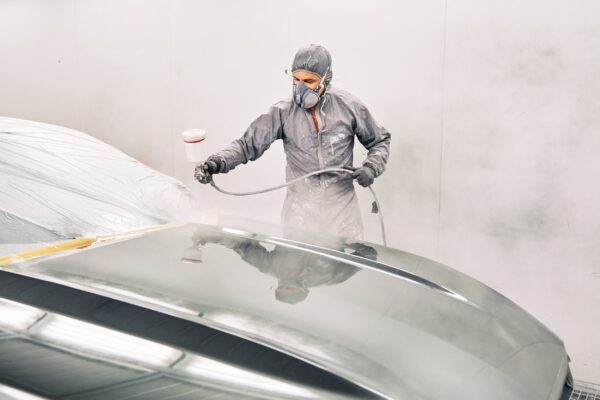
Conclusion about how much does it cost
In conclusion, determining how much to paint a hood involves understanding various factors that contribute to the overall expense. Whether you’re focusing on painting a specific area like the car hood or considering a full vehicle repaint, several key elements will impact the cost.
The condition of the car’s metal is crucial if the metal has rust or damage, it must be addressed before painting, which can increase the cost. Additionally, wet sand is often required to prepare surfaces properly, ensuring a smooth finish and better paint adhesion. This preparation work, along with any necessary repairs, can influence how much it costs to paint the car.
For those interested in maintaining the car’s own lines and contours, achieving a seamless job can add to the complexity and expense. Ensuring that the job aligns well with the car’s design requires precision and attention to detail.
Ultimately, understanding how these factors such as the car hood metal condition, the need for wet sanding, and the importance of aligning with the car’s own lines affect the cost will help you make informed decisions about your painting project.

Matthew Edward is a professional painter who loves to paint and wants to share useful tips and tricks which he had learned in many years of experience in painting. He also used many products that can be used for painting he has tried and tested each and every product to give an unbias opinion about it in his review. This blog is very useful for those newbies who want to learn painting without making mistakes.






